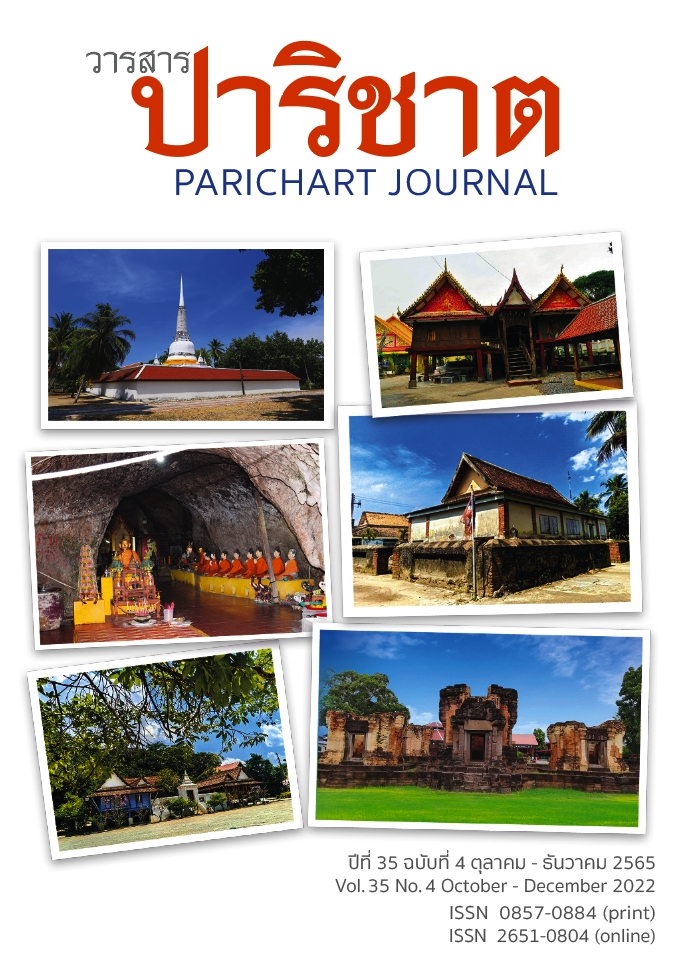Environmental Problems: A Study of Language Using Strategies from Online Headlines
Main Article Content
Abstract
This research aims to study language using strategies from online headlines by analyzing news data from online headlines regarding environmental problems from five news agencies, namely Thai PBS, Thairath, Prachatai, Daily News and Matichon. A total of 572 news data were obtained from the analysis. The results of the study revealed the following four key language using strategies. The first strategy was the vocabulary selection strategy which represented the reproduction of causes of environmental problems as the human actions that requireed resources to sustain their livings. The second strategy was the sentence structure strategy which urged mutual awareness of readers or audiences on the occurred environmental impacts. The third strategy was the pragmatics strategy which could cause readers anxiety about events and consequences of problems that would arise if humans continued to destroy the environment. The last strategy was the metaphor strategy. The comparative nature of the metaphor strategy caused anxiety to readers or audiences and created a new perspective on animals to make humans feel sympathetic to animals that lived in the same ecosystem as their world mates. The results of the analysis of the four language using strategies were found to be consistent with and related to environmental problems. The majority of the findings focused on the bother or the problem maker as the result of human actions that needed to compete for resources or strive for comfortable livings.
Article Details

This work is licensed under a Creative Commons Attribution-NonCommercial-NoDerivatives 4.0 International License.
References
Environmental Policy and Planning Division. (1988). Guidelines for conservation of nature and the environment. Cooperative and Agricultures Community of Thailand.
Phaosukthaworu, Y. (1995). An analysis of the Ministry of Finance’s press release disseminated through the mass media during 1992-1994. Unpublished Master’s Thesis. Bangkok. Chulalongkorn University.
Angsuviriya, C. (2008). “Femininity” in Satrisarn magazine (1948-1996): A relation between language and Ideology. Unpublished Ph.D.’s Thesis. Bangkok. Chulalongkorn University.
Angkapanichit, J. (2019). Discourse analysis. Thammasat University.
Royal Institute. (2003). Dictionary of the Royal Institute, 1999. Nanmeebooks.
Deephadung, S. (2009). Introduction to pragmatics. Language and Culture Research Institute for Rural Development. Mahidol University.
Panpothong, N. (2013). Linguistic critical discourse: Concepts and applications in the study of discourse in Thai language. Chulalongkorn University.
Puapattanakun, C. (2013). The Relationship between language and ideology in the discourse of fortune telling: A critical discourse analysis.
Petchkij, W., & Piyapasantra, S. (2017). “Being more than a king” A study of conception metaphors and Thai perspectives of King Rama IX. Vannavidan, 17, 5-33.
Kesonin, P.P., & Untaya, S. (2020). Guidelines for forest preservation in Thai online newspapers. Academic MCU Buriram Journal, 5(1), 177-191.
Phetkowkhiaw, K., & Angkapanichkit, J. (2020). Forest discourse and ideology in Thai society. Journal of Arts. Thammasat University, 20(2), 104-141.


